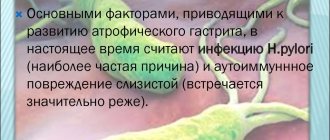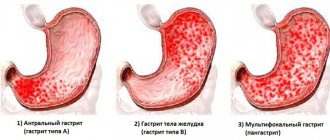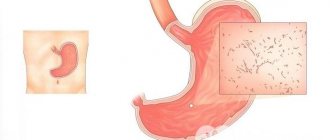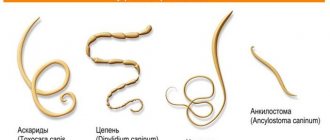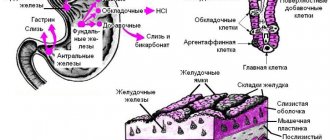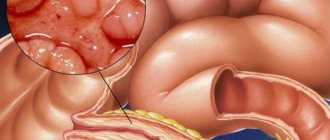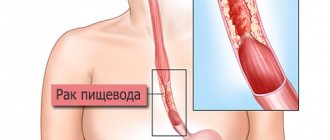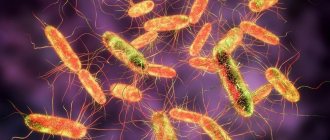What is chronic gastritis
Gastritis in general is inflammation of the inner wall of the stomach. If the smooth muscles of this organ are weakened, and the protective cover of mucus, which is formed by the cells located on the inner surface of the stomach, is damaged, then caustic digestive acids damage the walls and cause inflammation.
Gastritis is called chronic when inflammation of the inner surface of the stomach occurs regularly or symptoms persist for a long time
The risk of developing gastritis can be increased by many factors - from infectious diseases to individual intolerance to certain foods. Gastritis is called chronic when inflammation of the inner surface of the stomach occurs regularly or symptoms persist for a long time. Chronic gastritis develops for many different reasons.
Chronic gastritis can develop as a consequence of acute gastritis or as an independent disease. Its danger lies in the fact that it can occur for a long time without showing any symptoms. In the development of the disease, as a rule, there are periods of exacerbation and remission. During periods of exacerbation of chronic gastritis, short-term attacks of pain, discomfort in the upper abdomen, a feeling of heaviness, nausea after eating, and heartburn may appear, which indicates a dysfunction of the natural “valves” of the stomach and the reflux of acidic stomach contents into the esophagus.
A characteristic feature of chronic gastritis is the gradual growth of connective tissue in the gastric mucosa, replacing the cells that produce gastric juice (atrophy of the gastric mucosa). Chronic gastritis is often accompanied by a decrease in the production of gastric juice and acid (hypoacid gastritis).
Chronic gastritis in children can develop as a result of acute gastritis or as an independent disease
Helicobacter pylori infection, which parasitizes the stomach, disrupts the renewal processes of the mucous membrane; thus, when old cells die, new ones cannot be formed. This leads to gradual degradation of the gastric mucosa with loss of function of the glands that produce gastric juice.
Causes of chronic gastritis:
- Helicobacter pylori: its metabolic products lead to intense inflammation in the places where it “resides”. Although the extent of H. pylori infection is staggering, chronic gastritis occurs in only a few;
- parasitic infections: chronic gastritis can also be a consequence of infection with parasites;
- severe infectious diseases: infectious granulomatous gastritis is extremely rare and, as a rule, is a consequence of a serious illness such as tuberculosis;
- o weakened immunity: taking immunosuppressants to a patient can cause an undesirable consequence in the form of chronic gastritis if the person is infected with cytomegalovirus, herpes simplex virus or microbacterial infections.
Chronic gastritis in children
https://youtu.be/_46NW3dH68s
Chronic gastritis in children cannot be considered as an isolated disease of the stomach. The anatomical and physiological characteristics of this organ and its close connection with other organs and systems of the body lead to the frequent involvement of other parts of the digestive tract, as well as the nervous and endocrine systems, in the pathological process. The same reasons explain the frequent development of chronic gastritis against the background of neuroendocrine pathology, diseases of the intestines and biliary system.
The cause of chronic gastritis in children is a number of endogenous and exogenous factors. In childhood, the greatest importance in the development of the disease is a violation of the diet and regimen: irregular meals with long breaks, dry eating, fast eating with insufficient chewing of food; systematic overeating, frequent intake of rough, difficult to digest, spicy, fatty foods; monotonous set of food products.
Chronic gastritis can develop after acute inflammation of the stomach. In this case, the cause of chronicity of the disease is most often improper treatment of the acute process and premature abandonment of the dietary diet. In some cases, the cause of the development of chronic gastritis may be a food allergy, that is, intolerance to certain foods. Hereditary predisposition—a genetically determined tendency to stomach diseases—plays a certain role.
Clinical picture of chronic gastritis in children
At the early stage of development of chronic gastritis, the clinical picture of the disease is based on symptoms indicating the presence of functional gastric disorders.
Children with gastritis complain of abdominal pain, most often the pain is localized in the epigastric region and right hypochondrium
The clinical picture has some distinctive features, depending on the functional activity of the gastric glands (chronic gastritis with high or low acidity), as well as on the prevalence and localization of the process (antral, fundic gastritis or pangastritis).
Children complain of abdominal pain. More often the pain is localized in the epigastric region and right hypochondrium. Diffuse abdominal pain is relatively common. The intensity, nature and time of onset of pain may vary. With low acidity of gastric juice, abdominal pain is dull and diffuse. They usually appear after eating and do not depend on the food eaten.
Chronic gastritis with preserved and increased secretory function of the gastric glands is characterized by acute, paroxysmal pain, often associated with the intake of coarse, spicy, difficult-to-digest food and occurring 1-2 hours after eating. With gastritis with reduced secretory activity of the gastric glands, there is a decrease in appetite, an aversion to a number of foods (porridge, dairy dishes, etc.), nausea and vomiting are often bothersome, which usually begin 2-3 hours after eating.
With chronic gastritis with preserved and increased acidity of gastric juice, children's appetite is usually preserved. Nausea and vomiting are observed much less frequently than with subacid gastritis. At the same time, in such patients, frequent symptoms of the disease are heartburn, sour belching, that is, manifestations of acidism. About half of patients with this form of gastritis experience constipation.
Unlike adult patients, in childhood chronic gastritis is dominated by superficial gastritis and gastritis with damage to the glands without atrophy, and the inflammatory process often takes on the character of pangastritis. In the presence of an atrophic process, its severity is usually moderate. In addition, unlike adult patients, children do not have true achylia. In childhood, chronic gastritis is often combined with pathology of the duodenum.
Symptoms of mucosal inflammation
If gastritis is detected at an early stage, it is much easier to prevent its subsequent development. Therefore, parents need to familiarize themselves with the symptoms that indicate the presence of this disease. Suspicion should be caused by lethargy, apathy of the child, increased salivation, a feeling of overeating, flatulence, chills, and fever. During this period, he becomes capricious and may refuse his favorite entertainment.
Gastritis can be indicated by nausea, vomiting, changes in complexion, the appearance of dark circles under the eyes and coating on the tongue. Due to constant abdominal pain, the child’s appetite sharply decreases, belching, constipation and even diarrhea appear.
The above symptoms cannot clearly indicate the presence of gastritis, since there are many diseases that have similar symptoms. Only a doctor after an examination can confirm gastritis in a child.
Chronic gastritis in children treatment
Chronic gastritis differs from an acute inflammatory process in the gastric mucosa not only in the duration of its course, but also in the mechanism of its occurrence. This means that the chronic process is characterized by a long course, relatively mild symptoms, a tendency to periodic exacerbations and subsidence of inflammation and symptoms.
If acute gastritis is always a sudden onset and rapid progression, then chronic gastritis, on the contrary, is a gradual onset and prolonged inflammation. These features are based on the cause of each of these types of gastritis. Chronic gastritis in children occurs as a result of disruption of the secretory and motor activity of the stomach against the background of a decrease in the protective properties of its mucous membrane.
In this case, a situation arises when an excess amount of gastric juice is synthesized with its prolonged stagnation. An unprotected mucous membrane is unable to withstand such aggressive environments.
Chronic gastritis in children occurs as a result of a violation of the secretory and motor activity of the stomach against the background of a decrease in the protective properties of its mucous membrane
The consequence of this imbalance between protective and irritating mechanisms is a kind of self-digestion of the mucous membrane with gastric contents, accompanied by an inflammatory process.
Symptoms of chronic gastritis in a child:
- pain in the stomach;
- heaviness and belching;
- heartburn with nausea;
- a rare disorder of the general condition of the child.
The complex of therapeutic measures for gastritis in children depends on the type of the disease:
- antisecretory therapy for hyperacid condition of the stomach (famotidine, quamatel, ranitidine): drugs from the group of proton pump inhibitors are contraindicated in children. If chronic gastritis is accompanied by reduced secretion of juice, there is no need to use these drugs;
- Anti-Helicobacter therapy: carried out when there is a proven presence of Helicobacter in the gastric cavity. Includes antibacterial drugs (metronidazole, ornidazole, clarithromycin, amoxicillin), bismuth preparations (de-nol, vikalin), histamine receptor blockers (ranitidine, quamatel);
- antacids and gastrocytoprotectors: phosphalugel, Maalox, Gastromax, Almagel;
- agents that normalize gastric and intestinal motility: cerucal, motilium;
- antispasmodics if necessary: riabal, no-shpa;
- enzyme preparations : Creon, pancreatin, mezim;
For atrophic gastritis, iron supplements (totema, ferum-lek), restoratives and vitamins (actovegin, aloe, mumiyo, neurobex) are indicated; Diet therapy, treatment with mineral waters (Borjomi, Luzhanskaya, Truskavetskaya, Essentuki) and sanatorium-resort recovery.
Chronic gastritis in school-age children: symptoms and treatment
Chronic gastritis is an inflammatory disease of the gastric mucosa, accompanied by impaired gastric digestion.
The most common cause of gastritis is an incorrect diet and diet of the child. A genetic predisposition to diseases of the gastrointestinal tract plays a major role in the development of chronic gastritis.
The course of the disease is undulating: periods of exacerbation, which occur more often in spring and autumn, are followed by periods of remission. Children with chronic gastritis most often complain of a feeling of pressure, heaviness and pain in the abdomen, heartburn, nausea, loss of appetite, unpleasant taste in the mouth, weakness, and fatigue. Symptoms of the disease vary depending on whether the acidity of the gastric juice is preserved or reduced.
With low acidity, dull aching pain in the abdomen appears immediately after eating and does not depend on the food eaten, appetite is reduced, and nausea and vomiting often occur.
The most common cause of gastritis in children is an improper diet and diet of the child.
With preserved or increased acidity, the pain is acute, paroxysmal, usually appears 1-2 hours after eating, and is often associated with eating rough or spicy food. Appetite does not suffer. Worries about heartburn, sour belching, constipation may occur.
Children with chronic gastritis are often thin, irritable, and emotionally labile. Upon examination, attention is drawn to the strong coating of the tongue and painful sensations that appear when pressing in the epigastric region. To correctly select treatment tactics for children with chronic gastritis, it is necessary to take into account the phase of the disease, the type of gastric digestion disorder and the presence of concomitant diseases.
The first thing to start treatment with is diet therapy and creating the correct diet, exercise, sleep and rest for the child, with the exception of nervous and physical overload. It is necessary to set specific hours at which the child will have breakfast, lunch and dinner. You need to eat slowly, chewing thoroughly and washing down your food. The most strict diet is prescribed in the acute stage of chronic gastritis. It should be as gentle as possible.
Drug treatment of chronic gastritis should be comprehensive. Antispasmodics and sedatives are effective for pain. For increased acidity, antacids are used. Pancreatic enzymes, drugs that envelop the stomach wall and create a protective barrier, and sorbents are also prescribed. The therapy includes vitamins A, B1, B2, B6, C. When Helicobacter pylori infection is detected, antibiotics and bismuth preparations are used.
For herbal medicine (herbal treatment), St. John's wort, calendula flowers, decoctions of mint leaves, thyme, trefoil and other herbs are used. Concomitant diseases must be treated. In the remission stage, sanatorium-resort treatment and the use of heated mineral waters of low and medium mineralization are indicated. They are selected depending on the level of acidity of gastric juice.
The course of treatment for chronic gastritis takes from several months to several years. To check the effectiveness of treatment, a repeat esophagogastroduodenoscopy is performed. For chronic gastritis, it is advisable to conduct this study twice a year.
Recommendations for chronic gastritis in a child
Chronic gastritis in children develops over a fairly long period of time in the presence of constantly operating unfavorable factors. It can also be an infection, for example Helicobacter pylori, which currently plays an important role in maintaining inflammation of the mucous membrane of the stomach and duodenum.
However, the triggers for the onset of inflammation in children are often not infectious. These include errors in diet, violations of eating patterns, stressful situations, and great emotional stress to which modern schoolchildren are exposed. With chronic gastritis, symptoms develop gradually; at first, their intensity may not be very pronounced and may not affect the general condition of the child.
However, as inflammation develops, the symptoms intensify and disrupt the child’s quality of life and well-being, which also affects school performance.
The diet for a child with gastritis involves eating food every 3-4 hours in moderate quantities; normally, food remains in the stomach for about 2-3 hours
In addition, chronic gastritis can be the onset of more severe diseases, such as peptic ulcers of the stomach and duodenum.
Diet for chronic gastritis in a child
The diet involves eating food every 3-4 hours in moderate quantities. Normally, food stays in the stomach for about 2-3 hours. During this time, active grinding of food occurs there, mixing it with gastric juice, and digestion processes begin. Next, food enters the intestines in small portions for further digestion and absorption. Eating more frequently or overeating leads to food retention in the stomach, which can cause abdominal pain, a feeling of heaviness, nausea and even vomiting.
During long “hungry” periods, hydrochloric acid produced in the stomach for digestion, in the absence of food, can lead to irritation and inflammation of the mucous membrane of the stomach itself, as well as the esophagus. Then, in addition to abdominal pain, the child may be bothered by heartburn, belching, and bad breath. Fatty, fried foods, canned foods, carbonated drinks, large amounts of spices, and fast food can directly irritate the gastric mucosa, causing gastritis.
Proper nutrition
For gastritis it is prohibited:
- puff pastry products (buns, pies), freshly prepared white and rye bread;
- strong vegetable broths, fatty broths, stews, cabbage soup, borscht cooked with pork and lamb meat;
- fatty meats and fish;
- okroshka;
- all kinds of canned food and smoked meats;
- various sauces;
- fermented milk products (yogurt, kefir, fermented baked milk), salted cheeses, sour cream (in large quantities);
- hard-boiled and fried eggs;
- legumes;
- corn, millet porridge;
- white cabbage, sorrel, onions, cucumbers;
- fiber-rich and acidic fruits;
- ice cream, chocolate;
- strong tea, carbonated and coffee drinks.
With gastritis, the child is allowed:
- dried white, rye bread, biscuit, dry cookies;
- boiled and pureed vegetables;
- vegetable soups, puree soups, milk porridges;
- boiled, steamed, baked lean meat and fish;
- steam omelette, soft-boiled eggs;
- natural yogurt, milk, low-sour cottage cheese;
- raw, boiled, baked sweet fruits and berries, jellies, jelly;
- buckwheat, semolina, oatmeal, rice, pasta;
- juices, weak tea, compote.
Clinical guidelines for the treatment of chronic gastritis in children
Clinical recommendations for the diagnosis of chronic gastritis:
- a patient’s blood and urine analysis will help to recognize the inflammatory process;
- coprogram allows you to identify reduced secretory activity of the stomach;
- FGDS and histology;
- the use of a probe, Sali and Masevich tests allows one to study secretory function;
- taking a biopsy or culturing microorganisms in a nutrient medium will help identify H. pylori;
- manometry to measure the pressure in the duodenum.
It is very important to note that in foreign gastroenterology the term “chronic gastritis” no longer exists. The clinical recommendations of the Russian State Administration, which were thoroughly studied before writing the article, state that gastroenterologist clinicians use the concept of “functional dyspepsia.”
If the patient is diagnosed with this, the doctor already has an idea of the form of the disease and the symptoms observed in the patient.
Treatment of chronic gastritis in children should be differentiated, comprehensive and individual, depending on the age of the child.
That is, there is a high probability that the selected treatment methods will be as effective as possible and will be able to eliminate all unpleasant symptoms. How is chronic gastritis usually treated?
Treatment must be completed so that the disease does not manifest itself again. All medications must be prescribed strictly by the attending physician. Treatment of chronic gastritis in children should be differentiated, complex and individual, depending on the etiology, morphological changes, course of the process and the age of the child.
Clinical recommendations for the treatment of the disease:
- use of antibiotics;
- taking histamine receptor blockers;
- antacid substances;
- antispasmodics;
- proton pump blockers.
The main components of the treatment of chronic gastritis in children clinical recommendations:
- in case of severe exacerbation, hospital treatment is necessary;
- diet: food should be mechanically and chemically gentle (mucus soups, pureed vegetables and meat, jelly, porridge, pureed cottage cheese). Everything must be consumed warm every 3 hours (except for the night break);
- in case of increased gastric secretion, antisecretory drugs are prescribed - histamine H2 receptor blockers (for example, ranitidine). The H+,K+-ATPase inhibitor omeprazole is prescribed 20 mg/day orally for 4-5 weeks;
- given the frequent presence of Helicobacter pylori,
so-called three-component therapy is prescribed: bismuth tripotassium dicitrate (for example, De-Nol) for 2-3 weeks, amoxicillin for 2 weeks and metronidazole for 1 week in age-specific doses;
Children with chronic gastritis should be registered at the dispensary; regular examinations by a gastroenterologist are required.
- for hypermotor dyskinesia in the gastroduodenal zone, myotropic antispasmodics (papaverine hydrochloride, drotaverine), as well as metoclopramide and domperidone (Motilium) are used;
- multienzyme drugs are indicated (for example, pancreatin, pancitrate, Creon);
- outside of exacerbation, patients need sanatorium-resort treatment.
Prevention of mucosal inflammation
To exclude childhood gastritis, you need to take care of disease prevention. To do this, teach your child to follow some rules:
- do not eat on the go;
- maintain a daily routine;
- avoid overeating;
- eat fresh, warm food;
- eat small meals;
- give up fatty, fried foods.
Children's bodies react differently to the disease; for children who are 4 years old and 7 years old, the treatment will be prescribed differently. Therefore, when the first signs of the disease appear, you should not self-medicate; you should consult a specialist. Only timely detection of the disease, proper treatment and proper nutrition will allow the baby to fully recover.
It is important to understand that refusal of treatment will lead to serious complications, including the appearance of ulcers and gastric bleeding.
Parents should show their child by example that only a healthy lifestyle, a balanced diet, personal hygiene and giving up bad habits will help him be healthy and never know what gastritis is. But even after experiencing this disease, it is not too late to start changing your lifestyle. Take care of your children's health!
